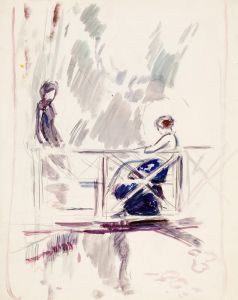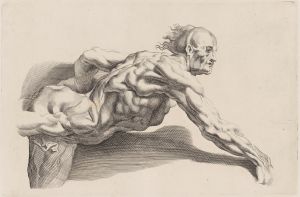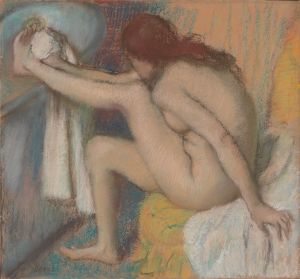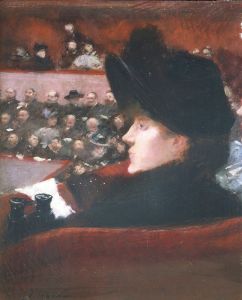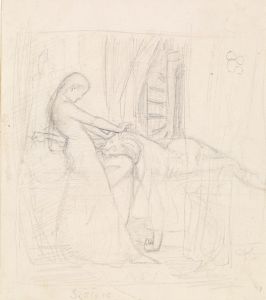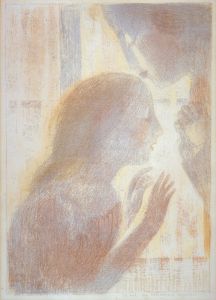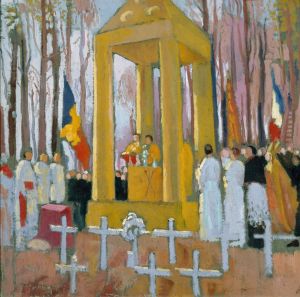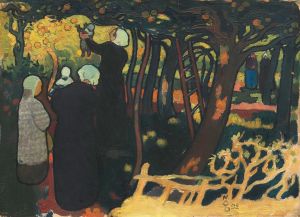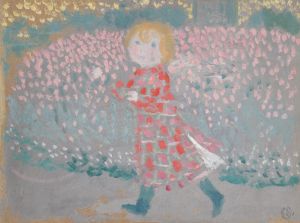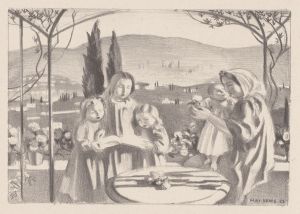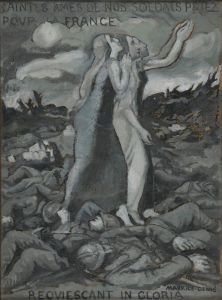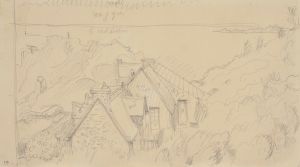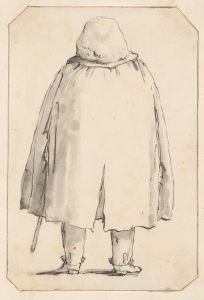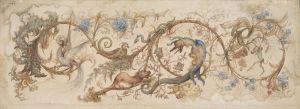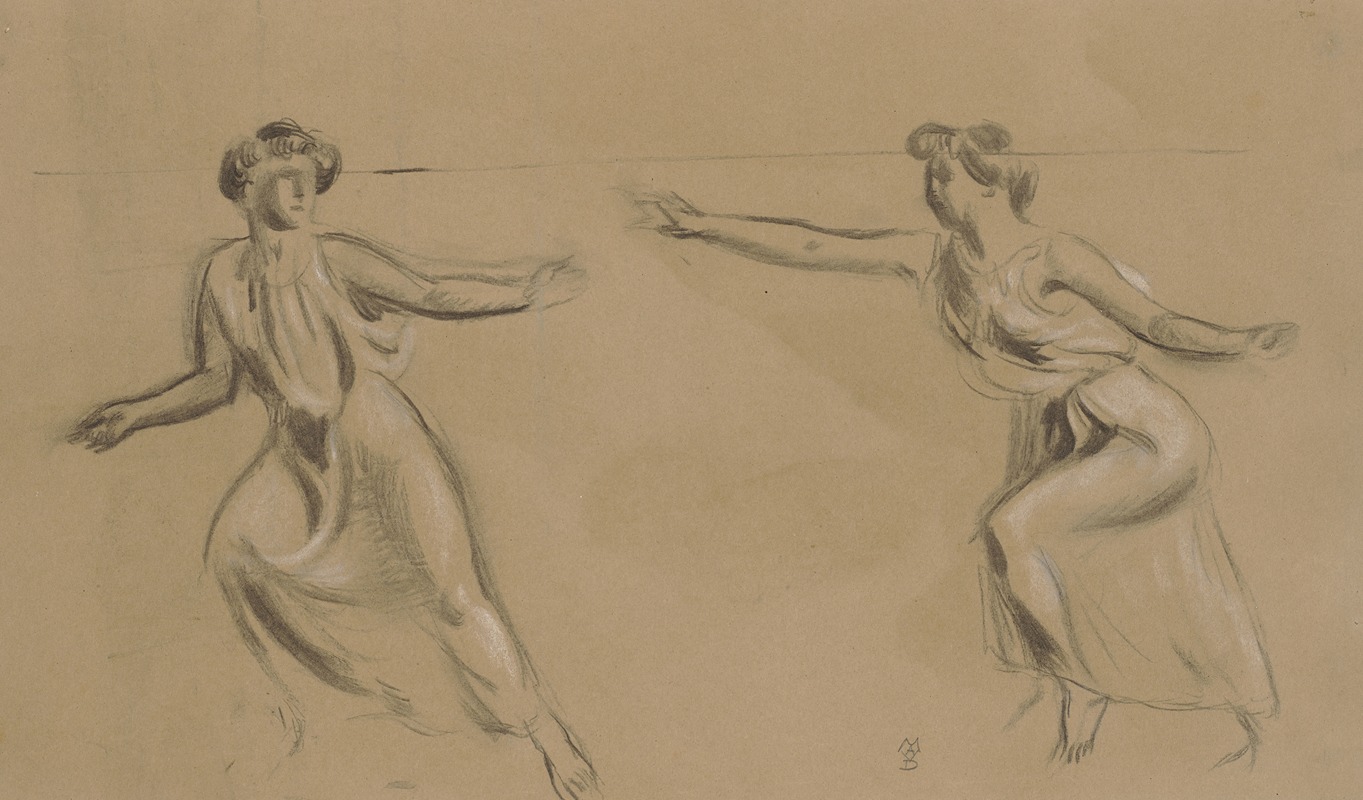
Zwei nach links laufende Frauen
A hand-painted replica of Maurice Denis’s masterpiece Zwei nach links laufende Frauen, meticulously crafted by professional artists to capture the true essence of the original. Each piece is created with museum-quality canvas and rare mineral pigments, carefully painted by experienced artists with delicate brushstrokes and rich, layered colors to perfectly recreate the texture of the original artwork. Unlike machine-printed reproductions, this hand-painted version brings the painting to life, infused with the artist’s emotions and skill in every stroke. Whether for personal collection or home decoration, it instantly elevates the artistic atmosphere of any space.
Maurice Denis was a prominent French painter and writer, associated with the Symbolist and later the Nabi movements. His work is characterized by its decorative style and emphasis on the spiritual aspects of art. One of his notable works is "Zwei nach links laufende Frauen," which translates to "Two Women Walking to the Left."
This painting exemplifies Denis's interest in capturing the essence of his subjects through simplified forms and harmonious color palettes. Although specific details about the creation and history of "Zwei nach links laufende Frauen" are limited, it is consistent with Denis's broader artistic philosophy, which sought to convey emotion and spirituality through art rather than mere representation.
Denis was deeply influenced by the Symbolist movement, which emphasized the expression of ideas and emotions over realistic depiction. This influence is evident in "Zwei nach links laufende Frauen," where the figures are rendered in a stylized manner, focusing on the overall composition and mood rather than intricate details. The painting likely reflects Denis's belief that art should evoke a sense of the sacred and the eternal, transcending the mundane aspects of everyday life.
The Nabi movement, of which Denis was a leading figure, further shaped his artistic approach. The Nabis were a group of avant-garde artists in the late 19th century who sought to break away from traditional academic art and explore new forms of expression. They were inspired by the works of Paul Gauguin and the Japanese prints that were becoming popular in Europe at the time. Denis and his fellow Nabis were interested in the decorative potential of painting, often incorporating flat areas of color and bold outlines, as seen in "Zwei nach links laufende Frauen."
Denis's work often explored themes of domesticity, religion, and nature, and he frequently depicted women in his paintings. The two women in "Zwei nach links laufende Frauen" may symbolize a sense of movement and transition, a common motif in Denis's art. The painting's composition, with its emphasis on line and form, reflects Denis's belief in the importance of structure and order in art.
Throughout his career, Denis wrote extensively about his artistic theories, advocating for a return to spirituality in art. He believed that painting should be more than just a visual experience; it should also convey deeper meanings and emotions. This philosophy is evident in "Zwei nach links laufende Frauen," where the simplicity of the figures and the harmonious use of color create a sense of tranquility and introspection.
Maurice Denis's contributions to the art world extend beyond his paintings. He was also a prolific writer and played a significant role in shaping the discourse around modern art in the early 20th century. His ideas influenced many artists of his time and continue to be studied and appreciated today.
In summary, "Zwei nach links laufende Frauen" is a testament to Maurice Denis's artistic vision and his commitment to exploring the spiritual dimensions of art. Through its stylized forms and thoughtful composition, the painting invites viewers to reflect on the deeper meanings behind the visual elements, embodying Denis's belief in the transformative power of art.





